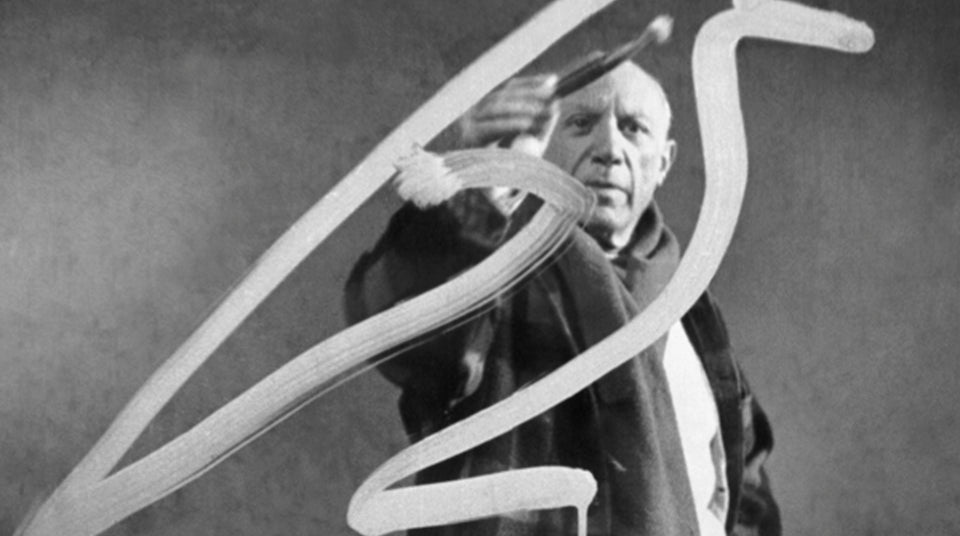Picasso’s Personal Expression

Abandoned as a stillborn by the midwife who delivered him, Pablo Picasso - in a parody of the birth of the biblical Adam - drew his first breaths after his uncle Salvador, Director of the Health Department of the port of Málaga, blew cigar smoke into his nostrils.

With disapproving countenance, the young Picasso expressed his displeasure at his rude awakening and set about acquiring the tools with which he could further express himself. According to his mother, Picasso’s first word was piz, short for lápiz - the Spanish word for pencil. Pablo’s precocity was encouraged and disciplined by his father, Don José, a museum curator, artist and art teacher, whose paintings Picasso later described as ‘dining room pictures’ - compositions of fur, feathers and flowers.
Young Pablo took to his father’s academic instruction readily, and was by the age of twelve - according to the reflections of his older self - drawing like Raphael, with careful proportions and precise delineation. Yet, almost from the time that he was enrolled at the Royal Academy of San Fernando in Madrid, Spain’s foremost art school, the young Picasso began to chafe under its rigid instruction. Picasso stoped attending classes, and instead spent his time in the Prado, with its collections of paintings by Velázquez, Goya and El Greco. With their ‘jarring colours, anti-realism and mystical faces’, the works of El Greco most profoundly affected the young Picasso, who sent his father some pictures he had painted in imitation of the artist. Don José wrote back: ‘You are following the bad way.’ One of the most prolific artists of all time, Picasso instigated a revolution in art. He eschewed the standard held good since the Renaissance that art should produce exact likeness, and sought instead to abstract the essence of his subjects.
Picasso’s artistic visions thoroughly exploited the potential of his materials, which broadly extended beyond those traditionally used in the visual arts to string, nails, toys, bus tickets - and even the remains of his lunch. Indeed, with some justification, Picasso was awarded the title ‘King of the Ragpickers’ by Jean Cocteau. For the next eleven weeks, The Royal Academy of Arts will be showcasing Picasso’s thorough exploitation of the material of paper. The exhibition consists of more than three hundred of the artist’s works, spans the extent of his eighty-year career, and ranges from one dimensional studies to three dimensional sculptures. Paper, a material integral to the composition of the vast majority of Picasso’s most seminal work, is also integral to the design of the commissions - ranging from shirts to arm slings - that Turnbull & Asser receives, and has received, from scores of history’s most influential men and women, among them Pablo Picasso himself.

Picasso was introduced to Turnbull & Asser by Norman Granz, the jazz impresario who fought, at significant personal cost, many anti-racist battles for the black American artists he signed to his labels - among them Louis Armstrong, Ella Fitzgerald, Dizzy Gillespie and Billie Holiday. Picasso’s Turnbull & Asser orders - for extravagant peasant-style blouses and loose-fitting pyjama bottoms - were mostly effected in silk. However, a 1969 order in Turnbull & Asser’s archives - above one for Henry McLlhenny, whose bottles of Tabasco sauce appear in every bar the world over - details the use of a spotted Sea Island cotton fabric. The order was written-out by the company’s most directional guiding hand, Kenneth Williams, who when I point out to him his misspelling of Picasso, disarmingly remarks over his flat white coffee that he ‘still can’t spell to this day.’ Unlike Picasso, Turnbull & Asser’s bespoke pattern cutters cannot give their work abstract definition. Yet they do, as Picasso did, subject it to a formidable draughtsmanship acquired by rigorous formal training and broad experience. Like Picasso, the company’s pattern cutters have a profound grasp of the behaviour of the myriad of materials in which their designs are executed, and like Picasso, they are masters of form - for fit, function and personal expression. The twelve collar styles, eight pocket styles and eleven cuff styles that festoon the walls of Turnbull & Asser’s Bury St. bespoke premises are merely customer aids, springboards to an ultimate personal expression epitomised by Picasso’s Turnbull & Asser orders, and ground breaking works of art.
The Royal Academy of Arts’ Picasso and Paper exhibition opens on the 25th January 2020 for eleven weeks. Turnbull & Asser’s bespoke department opened 135 years ago for an indefinite duration.


